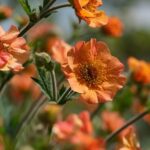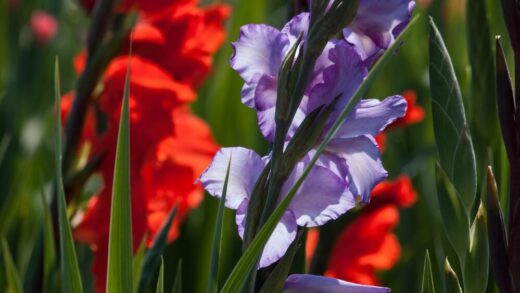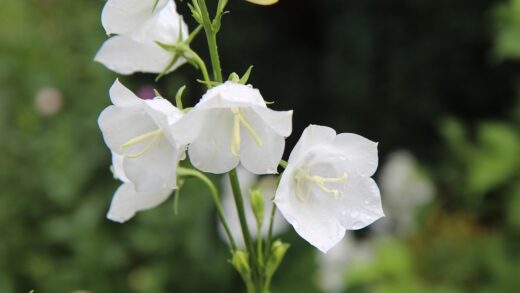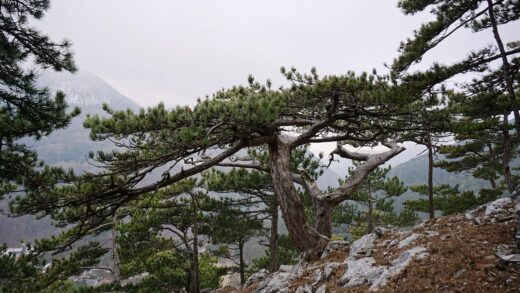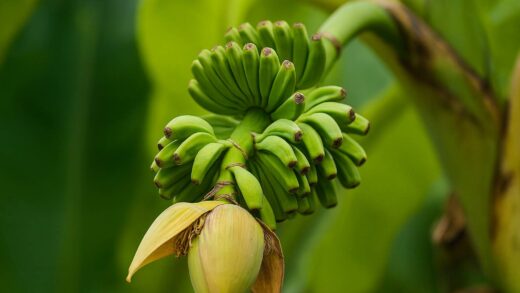The everlasting pea, a robust and charming member of the legume family, is a rewarding perennial vine for any garden enthusiast seeking long-lasting beauty with minimal fuss. Unlike its annual cousin, the sweet pea, this species provides a reliable display of color year after year, gracing trellises, fences, and banks with its cheerful clusters of flowers. Proper care ensures not only vigorous growth and prolific blooming but also the long-term health and establishment of the plant in the garden landscape. Understanding its fundamental needs, from soil composition to structural support, is the first step toward cultivating a truly magnificent specimen that will be a focal point for summers to come.
The foundation of successful cultivation lies in selecting an appropriate planting site, a decision that will influence the plant’s vitality for its entire lifespan. Everlasting peas thrive in a location that receives ample sunlight, ideally at least six hours of direct sun each day, which is crucial for robust flower production. While they can tolerate partial shade, the density and vibrancy of the blooms may be noticeably reduced in shadier spots. The chosen area should also offer protection from strong, damaging winds that can break the relatively brittle stems and tatter the foliage, diminishing the plant’s ornamental value.
Soil preparation is another critical aspect of care that cannot be overlooked for optimal plant performance. This perennial prefers a well-drained, moderately fertile soil with a neutral to slightly alkaline pH. Heavy clay soils should be amended with organic matter such as compost or well-rotted manure to improve drainage and aeration, preventing root rot, to which the plant is susceptible in waterlogged conditions. Conversely, overly sandy soils will benefit from the addition of organic material to enhance their moisture-retention capabilities, ensuring the roots have consistent access to water, especially during dry periods.
Once established, the everlasting pea is remarkably low-maintenance, a trait that endears it to many gardeners. It exhibits significant drought tolerance, capable of surviving periods of dryness without supplemental watering, although its appearance will be much improved with consistent moisture. Regular deadheading, the practice of removing spent flower clusters, is highly recommended to encourage a continuous blooming cycle throughout the summer and into early autumn. This simple task directs the plant’s energy away from seed production and channels it into creating new flowers, extending the season of interest significantly.
Providing adequate support is essential for showcasing the plant’s natural climbing habit and preventing it from becoming a tangled, sprawling mass on the ground. A sturdy trellis, arbor, fence, or even a wire support system should be installed at the time of planting or shortly thereafter to guide its growth. The plant uses tendrils to cling to structures, and training the young vines early will help establish a strong, well-formed framework. This not only improves air circulation, which can help prevent fungal diseases, but also ensures the beautiful flowers are displayed to their best advantage.
More articles on this topic
Understanding the growth cycle
The life cycle of the everlasting pea begins with germination in the spring as soil temperatures begin to rise. Young seedlings emerge and quickly develop into vigorous vines, focusing their initial energy on establishing a strong root system and vegetative growth. During this early phase, the plant rapidly extends its stems, using its tendrils to seek out and attach to any available support structure. Consistent moisture and adequate sunlight are paramount during this period to fuel the development of healthy foliage and a robust framework that will support future blooms.
As late spring transitions into summer, the plant enters its flowering stage, which is the most anticipated phase of its growth cycle. Triggered by the increasing day length and warmer temperatures, flower buds form in clusters along the stems, typically in the axils of the leaves. These buds soon open to reveal the characteristic pea-like blossoms, which can range in color from white and pink to magenta and reddish-purple. The blooming period is extensive, often lasting from early summer until the first frosts of autumn if the plant is well-cared for and regularly deadheaded.
Following the peak blooming period, if the spent flowers are not removed, the plant will transition into its seed production phase. The pollinated flowers will give way to the development of flattened green pods, which are characteristic of the legume family. These pods gradually mature and dry out, eventually turning a brownish color before splitting open to disperse the seeds. It is important to note that allowing the plant to set seed will often signal the end of its flowering for the season, as its energy becomes redirected to the reproductive process.
As autumn progresses and temperatures begin to drop, the vegetative growth of the everlasting pea slows down significantly. The foliage may start to yellow and die back, a natural process as the plant prepares for winter dormancy. The extensive root system, which has been storing energy throughout the growing season, remains alive beneath the soil. This underground structure is the key to its perennial nature, allowing the plant to survive the cold winter months and re-emerge with new growth the following spring, often more vigorous than the previous year.
More articles on this topic
Watering and feeding regimen
A consistent watering schedule is most beneficial during the plant’s first growing season to help it establish a deep and extensive root system. Young plants should be watered thoroughly once or twice a week, depending on weather conditions, ensuring the soil is moist but not waterlogged. Once established, the everlasting pea is remarkably drought-tolerant, capable of thriving with minimal supplemental irrigation. However, during prolonged periods of heat and drought, occasional deep watering will promote more lush growth and better flower production, preventing the plant from becoming stressed.
When it comes to feeding, the everlasting pea is not a particularly demanding plant, a testament to its hardy nature. In most average garden soils, it will perform admirably without the need for regular fertilization. As a member of the legume family, it has the unique ability to fix atmospheric nitrogen in the soil through a symbiotic relationship with rhizobia bacteria in its root nodules. This natural process provides it with a steady supply of this essential nutrient, reducing the need for nitrogen-heavy fertilizers which can sometimes promote excessive foliage growth at the expense of flowers.
For gardens with particularly poor or sandy soil, a light application of a balanced, slow-release granular fertilizer in the early spring can provide a beneficial boost. A fertilizer with a higher phosphorus and potassium content, rather than nitrogen, is ideal for encouraging strong root development and prolific blooming. Alternatively, incorporating a layer of well-rotted compost or manure around the base of the plant each spring provides a gentle, slow-release source of essential nutrients and improves the overall soil structure and health.
It is crucial to avoid over-fertilizing the everlasting pea, as this can lead to a host of problems. An excess of nitrogen, in particular, will stimulate lush, green, leafy growth but can significantly inhibit the production of flowers, defeating the primary purpose of growing this ornamental vine. Signs of over-fertilization can include weak, leggy stems and a general lack of blooms. If this occurs, it is best to cease all feeding and allow the plant to utilize the excess nutrients in the soil over time.
Pruning and maintenance
Pruning the everlasting pea is a straightforward task that primarily involves managing its size and encouraging a tidy appearance. The most significant pruning is typically done in late winter or early spring before new growth emerges. At this time, all of the previous year’s dead stems and foliage can be cut back hard, down to just a few inches above the ground level. This removes the dead material, makes way for new shoots, and helps to rejuvenate the plant, ensuring a vigorous start to the new growing season.
Throughout the blooming season, the most important maintenance task is deadheading, which involves the regular removal of faded flower clusters. This practice prevents the plant from setting seed, a process that consumes a great deal of the plant’s energy. By snipping off the spent blooms at the base of their stalk, you encourage the plant to redirect its resources into producing new flowers, effectively extending the blooming period from early summer well into the autumn months for a continuous display of color.
During the growing season, some light trimming may be necessary to control the plant’s vigorous growth and maintain its desired shape on its support structure. Wayward stems that grow away from the trellis or fence can be gently guided back and tied in, or they can be pruned back to a leaf node to encourage branching. This helps to keep the plant from becoming a tangled mess and improves air circulation through the foliage, which is beneficial for disease prevention, particularly against powdery mildew.
At the end of the season, after the first hard frost has killed the top growth, a final cleanup is recommended. The dead vines can be cut back to the ground to maintain a tidy garden appearance over the winter. Leaving the dormant root system in place, it is often beneficial to apply a layer of mulch, such as straw or shredded leaves, over the crown of the plant. This provides insulation and protects the roots from the freeze-thaw cycles that can occur during the winter months, ensuring the plant’s survival and a healthy return in the spring.
Pest and disease management
The everlasting pea is a remarkably resilient plant, generally untroubled by many of the common pests that affect more delicate garden specimens. However, it can occasionally fall prey to sap-sucking insects, most notably aphids. These small, often green or black insects tend to congregate on new growth and the undersides of leaves, feeding on the plant’s juices. A strong jet of water from a hose can often be enough to dislodge a small infestation, while larger populations can be controlled with applications of insecticidal soap or neem oil.
Slugs and snails can also pose a problem, particularly for young, tender seedlings in the spring. These mollusks are drawn to the soft new growth and can cause significant damage overnight, chewing ragged holes in the leaves and stems. To manage them, it is advisable to create a less hospitable environment by removing potential hiding places like debris and thick ground cover from around the base of the plant. The use of slug pellets, diatomaceous earth, or copper tape around the planting area can also provide an effective barrier against these nocturnal pests.
In terms of diseases, the most common affliction of the everlasting pea is powdery mildew. This fungal disease typically appears as a white, dusty coating on the leaves, stems, and sometimes the flowers, and is most prevalent in conditions of high humidity and poor air circulation. To prevent its onset, ensure the plant is sited in a location with good airflow and avoid overhead watering, which can leave the foliage wet for extended periods. If powdery mildew does appear, affected parts should be removed promptly, and applications of a fungicide, either commercial or a homemade solution of baking soda and water, can help to control its spread.
Root rot is another potential issue, though it is less a disease in itself and more a consequence of improper growing conditions. This problem arises when the plant is situated in heavy, poorly drained, or waterlogged soil, which deprives the roots of oxygen and creates an environment where fungal pathogens can thrive. The best defense against root rot is prevention: ensuring the planting site has excellent drainage and amending heavy clay soils with organic matter. Once a plant is severely affected by root rot, it is very difficult to save, underscoring the importance of proper site selection and soil preparation from the outset.
Support and training
Providing a suitable support structure is fundamental to the successful cultivation of the everlasting pea, as its climbing habit is one of its most defining characteristics. Without support, the plant will sprawl across the ground, creating a tangled mat of foliage that is prone to disease and fails to showcase the beauty of its flowers. A trellis, arbor, obelisk, or sturdy netting attached to a fence or wall are all excellent options that allow the vine to ascend vertically, maximizing its ornamental impact in the garden.
The installation of the support structure should ideally occur at the time of planting to avoid disturbing the root system later on. When selecting a support, consider the mature size of the plant, which can reach heights of six to nine feet or more, and ensure the structure is robust enough to handle the weight of the vine, especially when it is laden with flowers and wet from rain. The material of the support can vary from wood and metal to plastic, but it should offer numerous points for the plant’s delicate tendrils to grasp onto as it climbs.
Training the young vines early in their development is a key step in establishing a well-shaped and securely attached plant. As the new shoots emerge and begin to lengthen, they should be gently guided towards the support structure. It may be necessary to loosely tie the initial stems to the support using soft garden twine or plant clips until their own tendrils can take hold. This early guidance prevents the stems from snapping in the wind and encourages an even distribution of growth across the entire structure.
As the plant matures throughout the season, continue to monitor its growth and direct any wayward stems back towards the support. This ongoing, light-touch training helps to create a dense and uniform screen of foliage and flowers, preventing gaps and ensuring the plant remains tidy and contained within its allotted space. Regularly tucking in stray shoots not only improves the plant’s aesthetic but also enhances air circulation, contributing to its overall health and reducing the likelihood of fungal diseases taking hold within dense, tangled growth.












